|
|
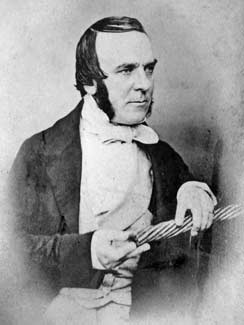 |
John W. Brett
The brothers Brett proposed in 1845 to establish a general system of telegraphic communication for Britain, and in 1847 obtained a concession from the French Government to establish a cable between England and France.
Additional information may be found in this comprehensive article on J.W. Brett by Steven Roberts. |
 |
|
|
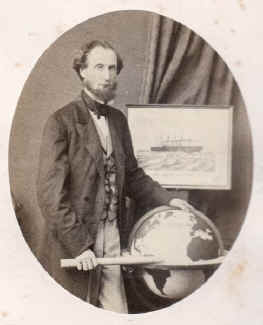 |
|
Cyrus
W. Field
The chief instigator of the Atlantic
Cable project. After meeting Frederic N. Gisborne in 1854, Field
established the New York, Newfoundland and London Telegraph Company.
He crossed the Atlantic many times in pursuit of the enterprise
before the final success of the Atlantic Cable in 1866. |
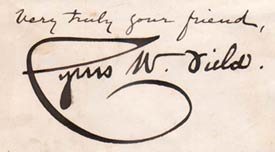 |
|
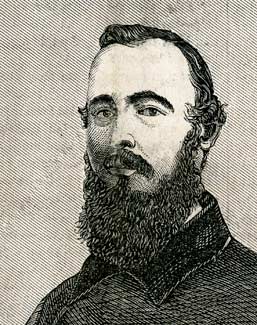 |
|
Frederic N. Gisborne
Originator of the cross-Newfoundland
telegraph line. Gisborne met with the Bretts in England in 1852, and laid
North America's first submarine cable that year. He ran out of funds
in 1854, and was introduced to Cyrus Field. Shut out of the Atlantic
Cable project, Gisborne eventually became Superintendent of Government
Telegraphs in Canada.
See also this detailed 1886 biography of Gisborne, and the full text of the 1851 journal of his St. John's-Cape Ray telegraph route survey. |
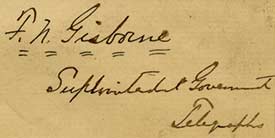 |
|
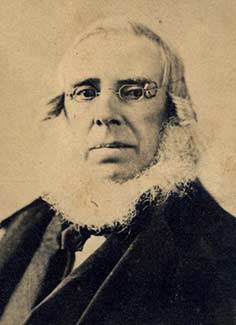 |
|
Peter Cooper
A New York industrialist, financier,
and philanthropist, Cooper was the first investor to join Cyrus
Field in the New York, Newfoundland and London Telegraph Company. |
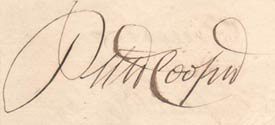 |
|
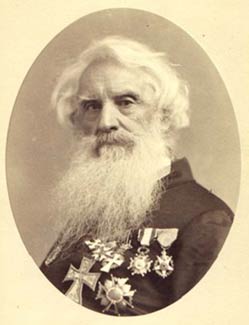 |
|
Samuel F.B. Morse
Developer of the telegraph in the United
States and an early proponent of the Atlantic Cable, Morse was recruited
to the cable project by Cyrus Field to add name recognition and
credibility to the enterprise. |
 |
|
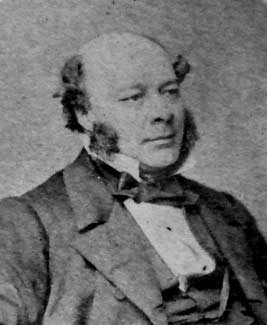 |
|
George Elliot
(Photo by Henry Clifford, courtesy of Jacy Wall)
Born in 1815 in Gateshead, the son
of a coal miner, George Elliot became a mining engineer and in 1840
a colliery owner. In partnership with Richard Glass he took over
the wire rope manufacturer Kuper and Company at Morden Wharf, East
Greenwich. The business was renamed Glass, Elliot and Company, and
began producing submarine cables.
Click here for the 1879 Vanity Fair biography and Spy caricature of Sir George Elliot. |
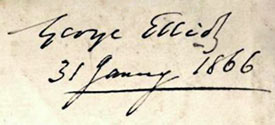 |
|
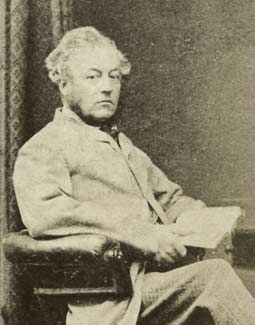 |
Richard Glass
Photo by Henry Clifford
Partner with George Elliot in the British
cable-making firm of Glass, Elliot, which made the 1857 and 1858
Atlantic cables and many others. The company merged with the Gutta
Percha Company in 1865 to form the Telegraph Construction and Maintenance
Company (Telcon), the contractor for the 1865 and 1866 Atlantic
cables. He was knighted in 1866 for his part in laying the Atlantic cables, and died in 1873 at the early age of 53.
Line drawing of Glass. |
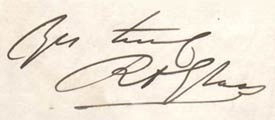 |
|
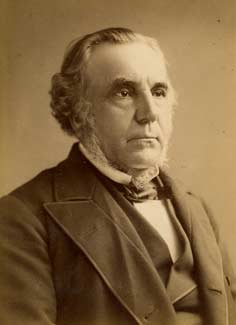 |
John Pender
An early investor in the Atlantic Cable
enterprise, Pender formed the Telegraph Construction and Maintenance
Company by merging Glass, Elliot & Co. and the Gutta Percha
Company, and became chairman of the new firm. The company laid the
1865/66 Atlantic cables and many subsequent cables, and Pender remained
a major force in the industry until his death
in 1896. |
 |
|
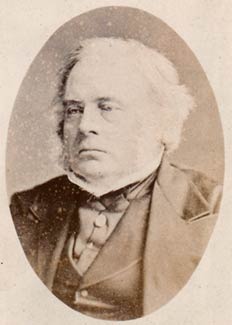 |
John Bright
A Manchester businessman,
orator, and politician, Bright was an investor (1856) in the first
Atlantic cable company. |
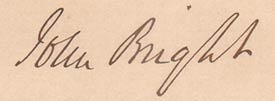 |
|
 |
|
Willoughby Smith
One of the first cable "electricians",
Smith joined the Gutta Percha company in 1848 and worked on the
1850 Dover-Calais cable. He was head of the electrical department
on the 1865 and 1866 Great Eastern expeditions. Involved
in communications for most of his life, in 1891 Smith wrote the
book "The Rise and Extension
of Submarine Telegraphy". |
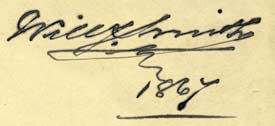 |
|
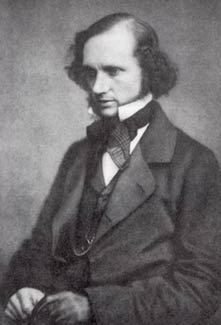 |
|
William Thomson (Lord Kelvin)
Scientific and engineering genius of
the 19th century, Thomson made many contributions to the technology
of submarine telegraphy, beginning with the early Atlantic cables,
and became a wealthy man as a result. He sailed on all five of the
Atlantic cable expeditions from 1857 to 1866. |
 |
|
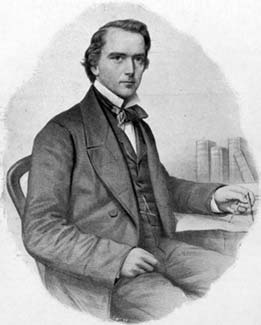
Image scan courtesy of William Breeze |
|
Charles Tilston Bright
A prolific inventor, Bright was appointed
Engineer-in-Chief to the Atlantic Telegraph Company at the age of
24. Two years later he was responsible for the laying of the 1858
Atlantic Cable, for which he was knighted. Bright was also involved
with the Mediterranean cables the telegraph to India, and many other
cables. |
 |
|
 |
|
Samuel Canning
An engineer with Glass, Elliot, Canning
was consulted by Cyrus Field in 1856 during the planning of the
first Atlantic cable. Canning also represented the contractors,
the Telegraph Construction and Maintenance Company (successors to
Glass, Elliot), on the 1865 Great Eastern expedition. |
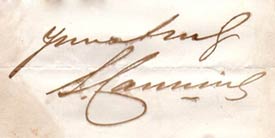 |
|
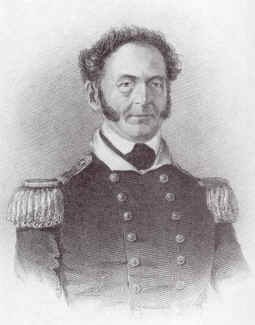 |
|
Captain William L. Hudson
A seasoned veteran of the US Navy,
having sailed with Charles Wilkes on the Exploring Expedition, Hudson
was captain of the Niagara on the 1857 and 1858 cable expeditions. |
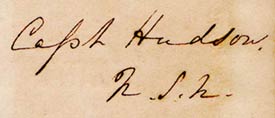 |
|
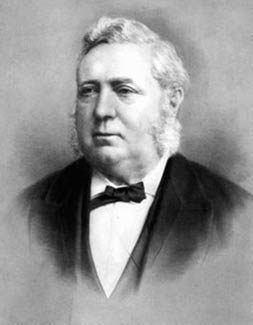 |
|
James Anderson
One of the Cunard Company's top officers,
Anderson captained the Great Eastern on the 1865 and 1866
cable expeditions. |
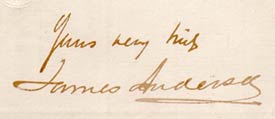 |
|
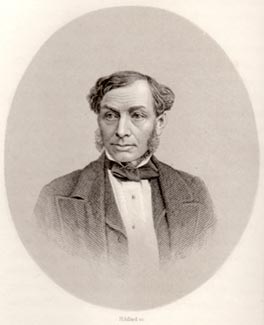 |
Daniel Gooch
A leading railway engineer and associate
of Brunel, Gooch headed the company which bought the Great Eastern to use as a cableship. He sailed on many of the Great Eastern cable expeditions. |
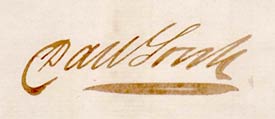 |
|
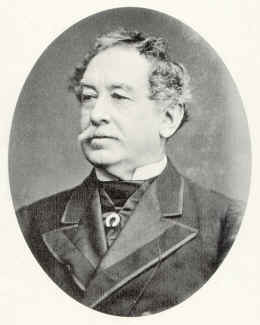 |
William H. Russell
A veteran journalist and war correspondent
for The Times, Russell sailed on the 1865 Great Eastern cable expedition and wrote the definitive
book on the voyage. |
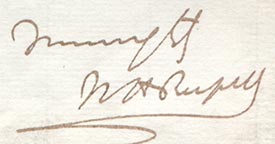
Signature image courtesy of Bill Glover |
|
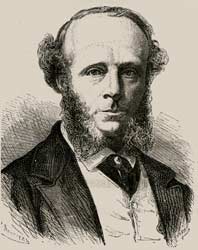 |
|
Edward Orange Wildman Whitehouse
"Wildman Whitehouse" was a surgeon by profession and an electrical experimenter by avocation. In 1856 he was appointed Electrician to the Atlantic Telegraph Company and was responsible for the testing of the 1857/58 cables, and for the design and operation of the equipment which would transmit the telegraph signals between Ireland and Newfoundland. |
 |
|
|
| |
|
|

